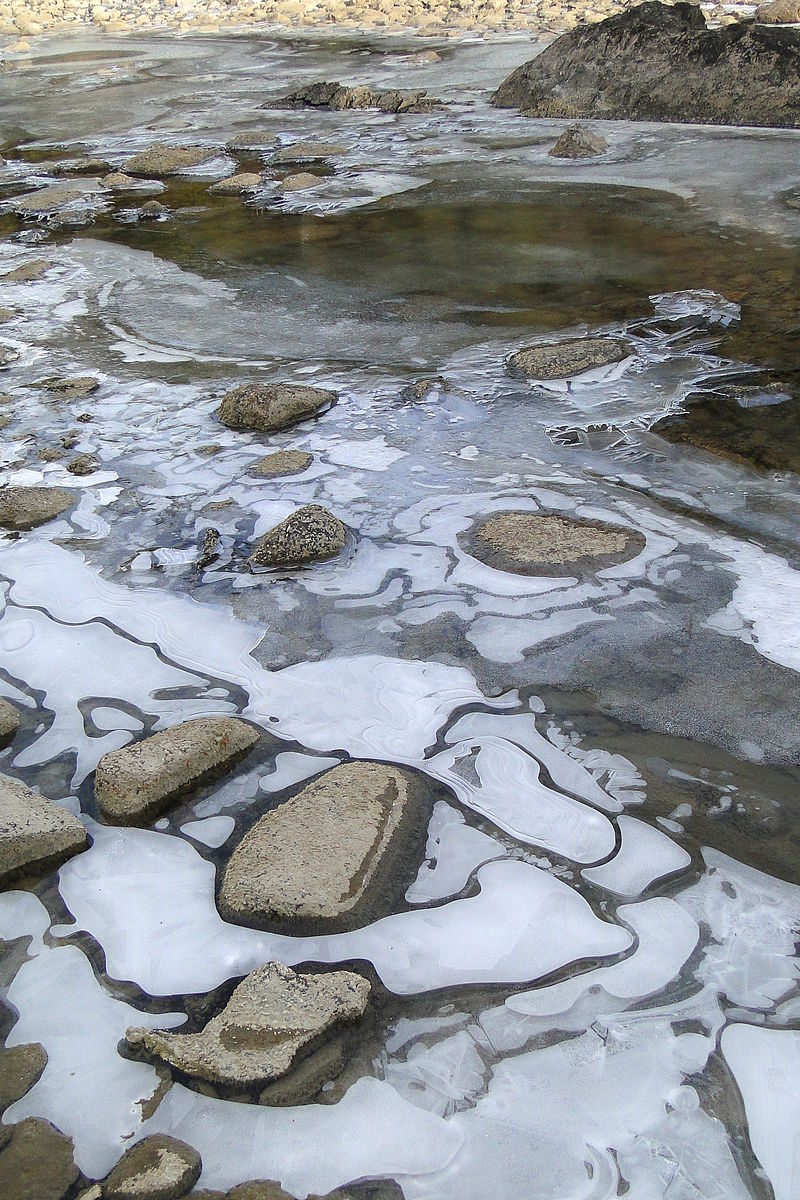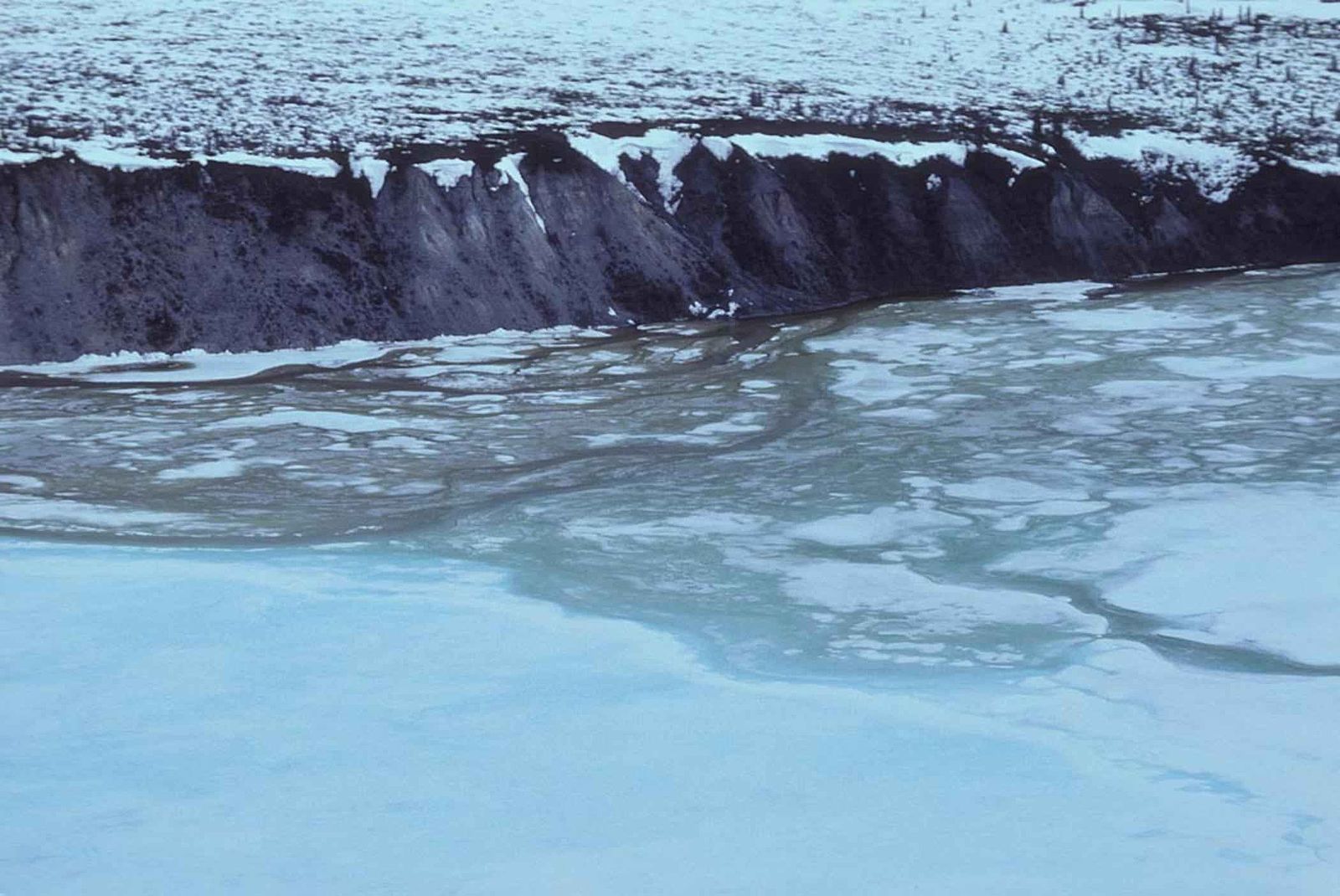According to the Canadian Encyclopedia, river ice forms on freshwater bodies when surface water temperatures fall slightly below the freezing point (0°C). However, unlike lakes which contain slowly-moving water, the turbulence of flow in a river prevents freezing until the entire water column has been reduced to 0°C. Occasionally, turbulent flow will prevent freezing until the surface water is below the freezing point (super-cooled). In still portions of the river, shore ice usually forms first, followed by frazil (small packets of drifting ice) and pancake ice (circular ice formed in fast moving water) in the main river channel.
The freeze-up of a river is a lengthy process by which ice cover progressively develops. Seasonal ice cover can develop as far south as 33°N in North America and 26°N in Eurasia, affecting 7 of the world's 15 largest rivers (Prowse, 2005). As warming occurs in the spring, the ice and snow melt and the break-up begins, transitioning the river from a relatively complete winter ice cover to open water flow.
Material on this page was edited and provided by Maren Pauly, Department of Geography, University of Waterloo. Hover over photographs for image credit.


